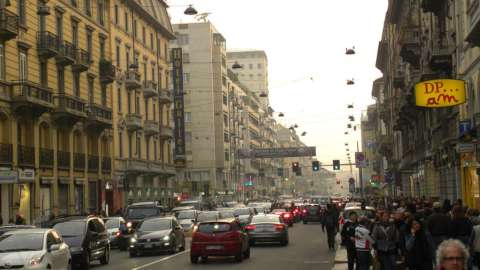They weren't enough controversy over the waste-to-energy plant. Now Aeneas points his finger at Rome due to a high mortality rate due to a combination of rising temperatures, due to climate change, and the concentration of pollutants in the air. Most of all you breathe ozone and PM10.
Smog in Rome and Milan: mortality risk increases by 8% and 6%
The risk that the Romans run is very similar to that of the citizens of Milan. The numbers up to 2050 are frightening: 8% more deaths in Rome and 6% more in Milan. The study by the Aeneas researchers was published in ScienceDirect. In particular, in the capital in the coming years there could be 91 deaths a year during the summer months with an ozone concentration above the limit value for damage to human health which is 70 micrograms/m3. “Rome has milder temperatures, low humidity and high ozone levels, while Milan, which is located in one of the most polluted areas of Europe such as the Po Valley, is exposed to colder temperatures, has a higher and more moderate winds, along with high levels of PM10,” he says Maurice Gualtieri, researcher Aeneas. The detail of the causes leads us to say that in Rome the number of deaths in the summer will affect the over 85s in the number of 312 cases out of 1.398 per year. Milan will count 971 due to the lower winter temperatures.
What happens to EU directives?
We are in denial of the EU Directive on air quality. In the Lombard capital – it is estimated that mortality will be higher due to the harsher climate and higher concentrations of PM10. The Milanese are already paying a high price today with exceeding the daily threshold of 50 micrograms/m3. Actually the two largest municipal administrations they fight against converging polluting data which in various circumstances have exposed the defects of urban environmental policies. To the fateful "what to do", ENEA replies as follows: "more rigorous policies on air quality and the fight against climate change would make it possible to reduce the number of deaths by 8 times in Rome and 1,4 times in Milan compared to the period 2004-2015.” The numbers are pitiless but Italy has been present in Europe for years data contrary to good planning declaimed in conferences and study seminars. On Rome, which for a few months has Roberto Gualtieri as the new mayor, criticism of his city plan makes even more headlines. In the city the number of private cars in circulation has reached the record of 629 cars per thousand inhabitants but there are no signs of an inversion. And neither are movements like the one in favor of the waste-to-energy plant.





